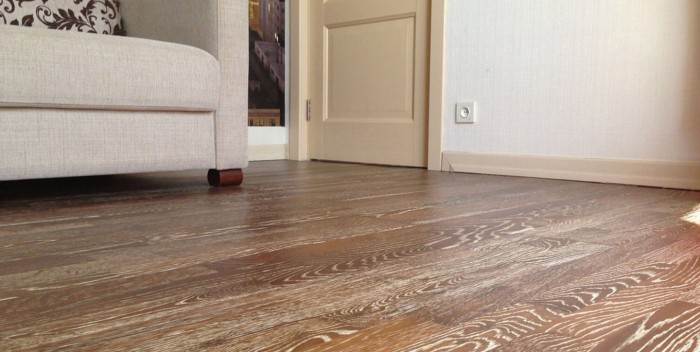How to choose a laminate
When equipping your own home, you want to do everything not only beautifully, but also practically. Many people choose laminate flooring. Let's take a look at all the intricacies of choosing this material.
Types of laminate
Laminate flooring is commercially available in a variety of textures, shades and patterns. In addition to the usual structure of wood of various types, you can also find laminate with imitation of tiles or stone. In addition, the laminate is divided by the number of stripes. Three-strip laminate flooring resembles parquet in appearance and is suitable for small rooms. A two-strip laminate flooring looks like a classic floorboard. For large rooms, it is more convenient to use a single-strip laminate.
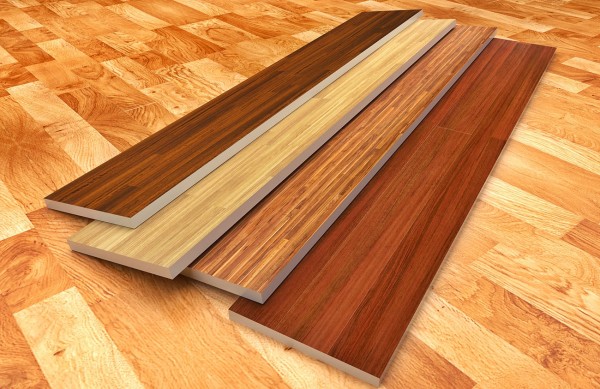 The surface of the laminate can also vary. It can have a glossy sheen or a rough wood imitation. Laminate treated with natural wood has small grooves that repeat the classic wood structure. Gloss coated laminate has a smooth, waxed exterior, oiled or varnished.
The surface of the laminate can also vary. It can have a glossy sheen or a rough wood imitation. Laminate treated with natural wood has small grooves that repeat the classic wood structure. Gloss coated laminate has a smooth, waxed exterior, oiled or varnished.
Depending on the purpose of the room where the laminate will be used, the following classes of wear resistance can be distinguished:
- The greatest wear resistance is possessed by a 33 class laminate. It is used in rooms where there are a lot of people. Usually these are industrial and trade halls.
- For offices and conference rooms, a coating with a lower resistance of 32 or 31 classes is used. This laminate also resists water and scratches well.
- For living quarters use a coating with a wear resistance of 23, 22 or 21 classes. In this case, class 21 laminate is used in dry rooms with low traffic, for example, in bedrooms.
Pros of laminate
The positive aspects of using laminate flooring in the repair include, first of all, its relatively low cost compared to solid wood or ceramic tiles. Laminate flooring can withstand significant mechanical stress. For example, after heavy objects fall on it, the effects of high temperature will remain the same. Prolonged and intense mechanical stress and friction will also not harm such a coating.
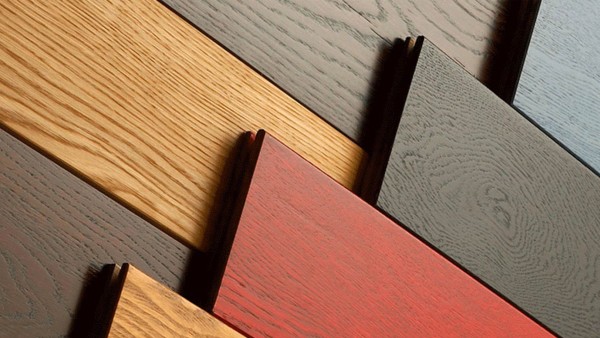 Laminate flooring is easy to install. After a detailed study of the installation instructions, even a novice builder can handle a laminate covering device. This is facilitated by all kinds of fastening systems built into the laminate boards. For the installation of laminate flooring, no additional materials are often required. Often the underside of the laminate boards is already fitted with a soundproofing covering, so that nothing else is needed for installation.
Laminate flooring is easy to install. After a detailed study of the installation instructions, even a novice builder can handle a laminate covering device. This is facilitated by all kinds of fastening systems built into the laminate boards. For the installation of laminate flooring, no additional materials are often required. Often the underside of the laminate boards is already fitted with a soundproofing covering, so that nothing else is needed for installation.
An undoubted advantage is the rich selection of textures, colors and patterns of the laminate board. In addition to the usual structure of wood or stone, you can now see on sale a laminate with floral patterns, images of fruits, newspaper texture and others.
Look after behind such a coating is very simple. Modern laminate flooring may even have a special anti-static coating that repels dust... It can be cleaned even with special chemicals and removed from it any stains... Laminate board is not afraid of sunlight, does not darken and does not fade.
Cons of laminate
Like any other building material, laminate flooring is not without its drawbacks. Fortunately, the list of such is not large and, with some precautions, can even be minimized.
Do not allow moisture to get under the laid laminate flooring. This can make the board swell. In many ways, water resistance depends on the quality of the laminate board. Therefore, you should not save on good coverage, it is better to buy material from a trusted manufacturer.
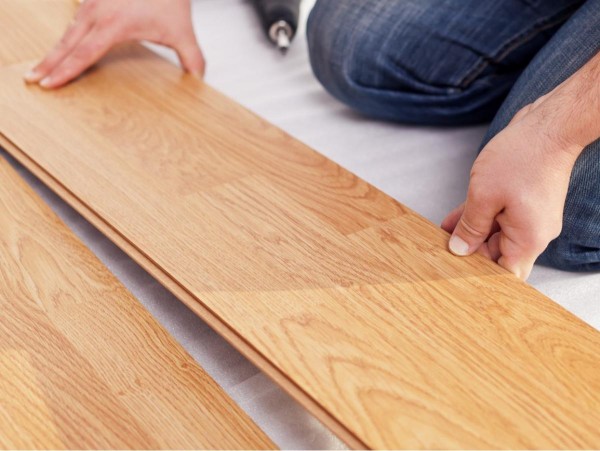 Another disadvantage is the need to replace an entire laminate board or even several pieces if, for some reason, the coating is damaged. Therefore, when buying laminate flooring, take a few more pieces than you need. So you can easily and simply replace the damaged part. Indeed, even with the same color, the laminate of a different batch may have a difference in shade.
Another disadvantage is the need to replace an entire laminate board or even several pieces if, for some reason, the coating is damaged. Therefore, when buying laminate flooring, take a few more pieces than you need. So you can easily and simply replace the damaged part. Indeed, even with the same color, the laminate of a different batch may have a difference in shade.
Laying laminate flooring requires good preparation of the subfloor. It should be perfectly flat. Otherwise, you run the risk of ending up with a crooked and squeaky floor.
How to choose a laminate
Laminate flooring is environmentally friendly. Therefore, you should not fear for your health with such a floor covering. Even for residential premises, we advise you to purchase a laminate flooring of at least class 31. In an apartment, such a laminate will serve you for many years, which will ultimately recoup its cost several times. The marking on its packaging will tell you about the features of a particular laminate:
 The thickness of the laminate board can be different and ranges from 6 mm to 12 mm. Prefer thicker laminate flooring. It is stronger and easier to install. In addition, the thickness also affects the sound-absorbing properties of the floor. Buy coverage only from trusted and well-proven manufacturers. They usually give a guarantee on their product for at least 20 years. These manufacturers include Pergo, Tarkett and others. And Alloc laminate has a lifetime warranty.
The thickness of the laminate board can be different and ranges from 6 mm to 12 mm. Prefer thicker laminate flooring. It is stronger and easier to install. In addition, the thickness also affects the sound-absorbing properties of the floor. Buy coverage only from trusted and well-proven manufacturers. They usually give a guarantee on their product for at least 20 years. These manufacturers include Pergo, Tarkett and others. And Alloc laminate has a lifetime warranty.
Floor panels can be connected using glue or special locks. The first option has a lower cost and greater moisture resistance. But at the same time, such a coating requires special skills when laying. In addition, the coating elements connected with glue cannot be replaced.
Snap-joint laminate is easier to install and can be repaired, but it requires a perfectly prepared surface with a curvature of no more than 3 mm per meter of floor.
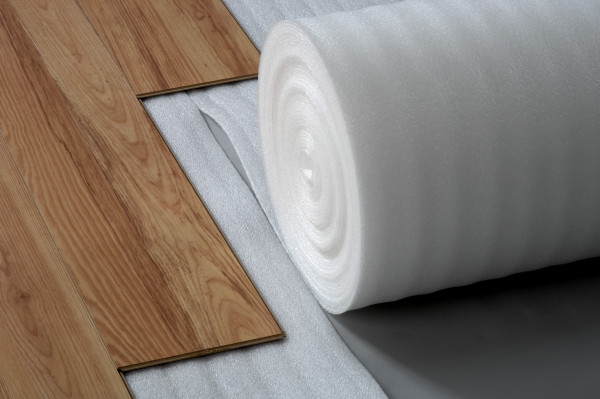 Pay attention to the underlay used during installation. Most often, a polyethylene foam backing is used. It is notable for its low cost and easy use. But at the same time, over time, such a substrate sags and loses its shape. For good thermal insulation, it is best to use a cork backing. It serves for a long time without losing its shape. Its disadvantage is the possibility of condensation formation. This disadvantage can be solved by taking a cork backing with rubber or bitumen. It will cushion well and will last a long time.
Pay attention to the underlay used during installation. Most often, a polyethylene foam backing is used. It is notable for its low cost and easy use. But at the same time, over time, such a substrate sags and loses its shape. For good thermal insulation, it is best to use a cork backing. It serves for a long time without losing its shape. Its disadvantage is the possibility of condensation formation. This disadvantage can be solved by taking a cork backing with rubber or bitumen. It will cushion well and will last a long time.
